Autumn fog at Pont-de-Montvert |

Autumn fog at Pont-de-Montvert |

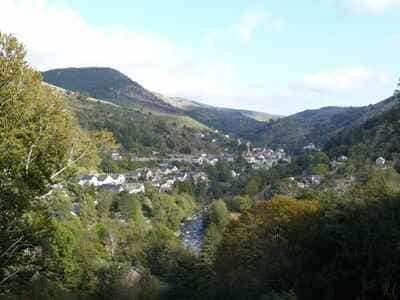 Before Pont-de-Montvert, the rock walls overlooking the road along the Tarn shine with the large ice cascades formed by the runoff and the polar cold of recent days. Ritual: a brief stop in the village.
Before Pont-de-Montvert, the rock walls overlooking the road along the Tarn shine with the large ice cascades formed by the runoff and the polar cold of recent days. Ritual: a brief stop in the village.
It was my brother who introduced me to Pont-de-Montvert over forty years ago… How did he discover this corner of Lozère himself? I can't quite remember; he wandered a lot, he loved to drive. We fished together in the area for years, then Tarn got married and moved to the southwest, near those Pyrenees to which he had grown strongly attached and near which death caught him. He must have been five or six years old when he entered our family, leaving behind his native Vietnam and his worst memories. Tarn grew up with us, stumbling along the way. He often saw me prepare for my outings, and his eyes would light up when I unpacked all my little gear: pliers, hooks, spools of line, feathers, floats.
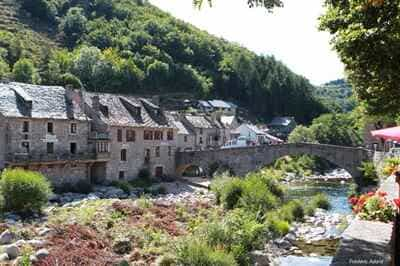 One day, he insisted on accompanying me to the water's edge… Meticulous care, ingenuity, and patience were part of his innate qualities: he would have been an extraordinary fisherman. But this guy also had an inexhaustible competitive spirit: our camaraderie was never quite what I would have liked it to be. Yet his love for fishing and nature was deep, and I remember with emotion our exchanges by the Tarn.
One day, he insisted on accompanying me to the water's edge… Meticulous care, ingenuity, and patience were part of his innate qualities: he would have been an extraordinary fisherman. But this guy also had an inexhaustible competitive spirit: our camaraderie was never quite what I would have liked it to be. Yet his love for fishing and nature was deep, and I remember with emotion our exchanges by the Tarn.
I have often reflected, since that Pentecost weekend in 1973 when I arrived at Pont-de-Montvert, on my absurd attachment to this piece of meteorite that is the south of Lozère. Could I have lived there? I don't know; higher up, towards Mende and the Lot Valley, Aubrac, and Margeride, certainly. But the Cevennes have something terrible in their geography. Jean Carrière describes all this wonderfully in *L’Épervier de Maheux*. And yet I love this land: the Cevennes are primarily the Cevenols, I understand myself. The landscape has a power over people's souls, but not always logical. For example, the Provençal Alps are splendid and airy, but their villages are tough. The Cevennes, on the other hand, have rugged and sometimes ugly landscapes, but their inhabitants are good.
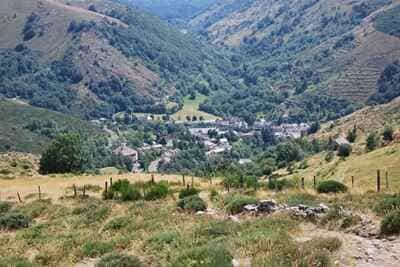 I remember an evening towards the end of the eighties, in a rural gîte by the Rieumalet. Pink flames danced on the embers, lighting up our profiles. We smiled at each other. At one point, the evening was also dedicated to the memory of Paul, whom some of us knew well. I had met him one June evening, two or three years earlier. We were both returning from fishing. At first glance, nothing was more austere and perfectly friendly than this one meter eighty tall, taciturn Parisian, as thin as a cuckoo, with a very low voice.
I remember an evening towards the end of the eighties, in a rural gîte by the Rieumalet. Pink flames danced on the embers, lighting up our profiles. We smiled at each other. At one point, the evening was also dedicated to the memory of Paul, whom some of us knew well. I had met him one June evening, two or three years earlier. We were both returning from fishing. At first glance, nothing was more austere and perfectly friendly than this one meter eighty tall, taciturn Parisian, as thin as a cuckoo, with a very low voice.
At the Café du Commerce, we had drunk beer while shelling pistachios. I was struck by the words Paul chose to describe and emphasize the revelation that the wildness of these Celtic heaths, the violence of their torrents, and the softness of their streams had been for him. This was five or six years earlier. He came from Paris, where he practiced a liberal profession that I no longer remember. Passionate about fly fishing, he wanted to discover the Tarn and the Lot, which he spoke of as being among the most beautiful trout rivers in Europe. I later learned that it was also about healing from the memory of a woman.
So he arrived one April morning, and to everyone's astonishment, he stayed there; he did not return to Paris. Everything a conventional romantic could imagine happened there, even a few nights under the stars. He lived in a hostel with a little money, the clothes he had brought in an old suitcase, and his battered Peugeot… But he had found his place.
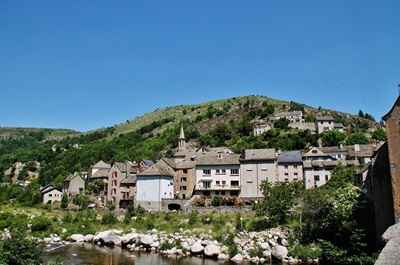 He took odd jobs, repaired fences, cared for animals, maintained cars, and even gave a few fly fishing lessons; finally, he successfully passed a modest worker exam at the Departmental Roads and rented a small house in the village. This social turnaround, of course, secured him real fame in the region. But it was also his fishing talents that made him known. I know what I’m talking about.
He took odd jobs, repaired fences, cared for animals, maintained cars, and even gave a few fly fishing lessons; finally, he successfully passed a modest worker exam at the Departmental Roads and rented a small house in the village. This social turnaround, of course, secured him real fame in the region. But it was also his fishing talents that made him known. I know what I’m talking about.
I have at least two vivid memories of our outings on the Tarn: one day, one May evening, I followed him through the terrifying gorge downstream from La Malène, where in places the Tarn splashes against three-meter-high granite blocks. A storm was brewing over Finiels, the sky was black. At six o'clock, on the small road running along the gorges above us, we could see cars driving with their headlights on. It was extraordinary: you had to see this boy moving in the powerful water of the torrent, the foam up to his belly, staggering, stumbling, without taking his eyes off the whirlpool where the trout were rising, and then, with the fish hooked, slowly retreating to the shore to tire out his catch. The maneuver is delicate; Norman Maclean in his book and Robert Redford in his beautiful film have perfectly described it.
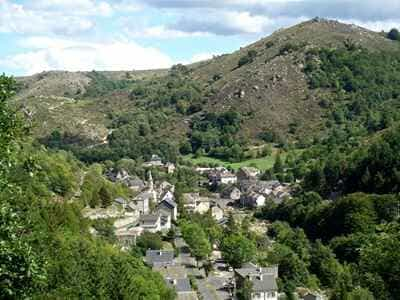 Another time, I think at the end of summer, we decided to go for the "evening catch" near Bédoûs. With fingers still black from picking blueberries, we had prepared our lines and chosen our flies; I hesitated: the waters were low, very clear... To fish with flies, Paul only used natural honey-colored lines. I believe he bought them from Dubos on Île Saint-Louis. Once a year, at the end of the season, he delicately cleaned them with slightly soapy warm water, then laid them out to dry on the back of a chair before greasing them, as is recommended in all good specialized manuals.
Another time, I think at the end of summer, we decided to go for the "evening catch" near Bédoûs. With fingers still black from picking blueberries, we had prepared our lines and chosen our flies; I hesitated: the waters were low, very clear... To fish with flies, Paul only used natural honey-colored lines. I believe he bought them from Dubos on Île Saint-Louis. Once a year, at the end of the season, he delicately cleaned them with slightly soapy warm water, then laid them out to dry on the back of a chair before greasing them, as is recommended in all good specialized manuals.
He wanted to travel: his administration allowed him to take a year of unpaid leave, and he went to England where I don't know what seasonal work allowed him to earn a lot of money. He also met Nathalie there and married her. After returning to live in the Cevennes, they bought a small house backed against the temple and surrounded by roses. There, they recreated this marvelous English way of life: faded tapestries, shelves full of books and records, mismatched old furniture, antique engravings, maps, watercolors, and animal drawings.
One day, Paul gave me a copy of the little book—fishing notebooks—that he had published at his own expense: fifty pages full of "snow sails," "morning frost," "gentle sun," "dark fog"... I had read these lines my way, and I could have, I should have, refrained from this somewhat too emotional comment that earned me, for a while, the amused suspicion of my friends. When the chances of my travels lead me to cross the region, even if I don't have time to visit them, I always stop for a moment by a meadow or a stream to listen to the wind in the pines, to watch the light stretch its arms in glory over the deserted heath. by Patrick Heurley. In time and place: Autumn Fog.
Former holiday hotel with a garden along the Allier, L'Etoile Guest House is located in La Bastide-Puylaurent between Lozere, Ardeche, and the Cevennes in the mountains of Southern France. At the crossroads of GR®7, GR®70 Stevenson Path, GR®72, GR®700 Regordane Way, GR®470 Allier River springs and gorges, GRP® Cevenol, Ardechoise Mountains, Margeride. Numerous loop trails for hiking and one-day biking excursions. Ideal for a relaxing and hiking getaway.
Copyright©etoile.fr